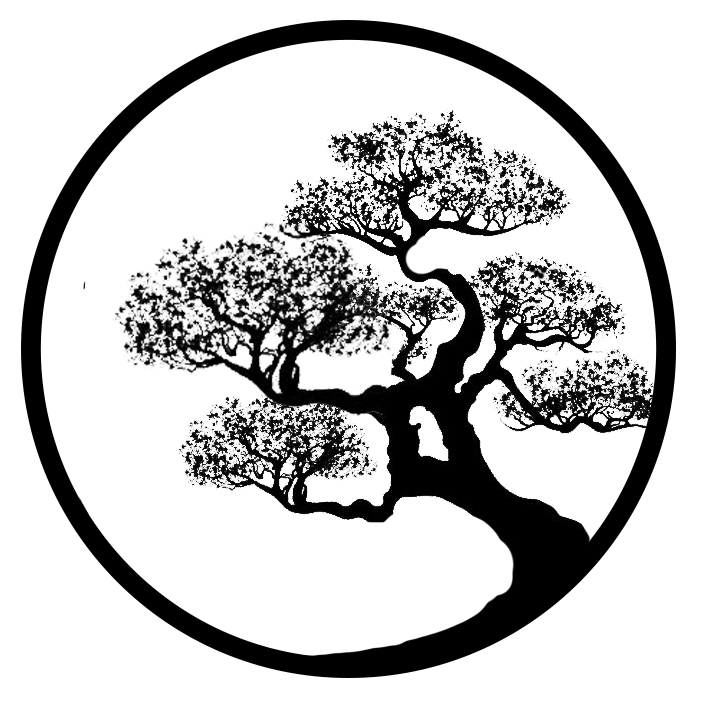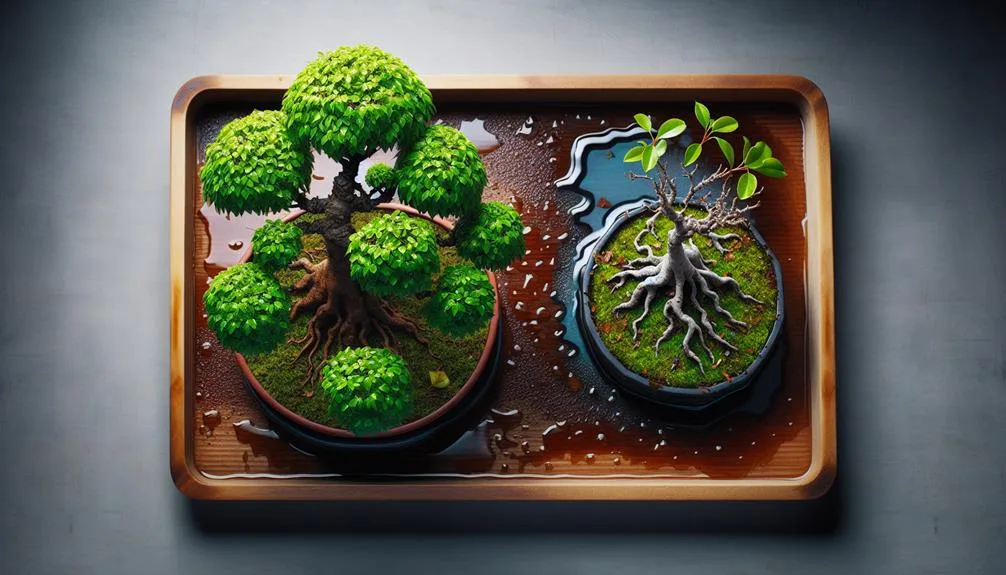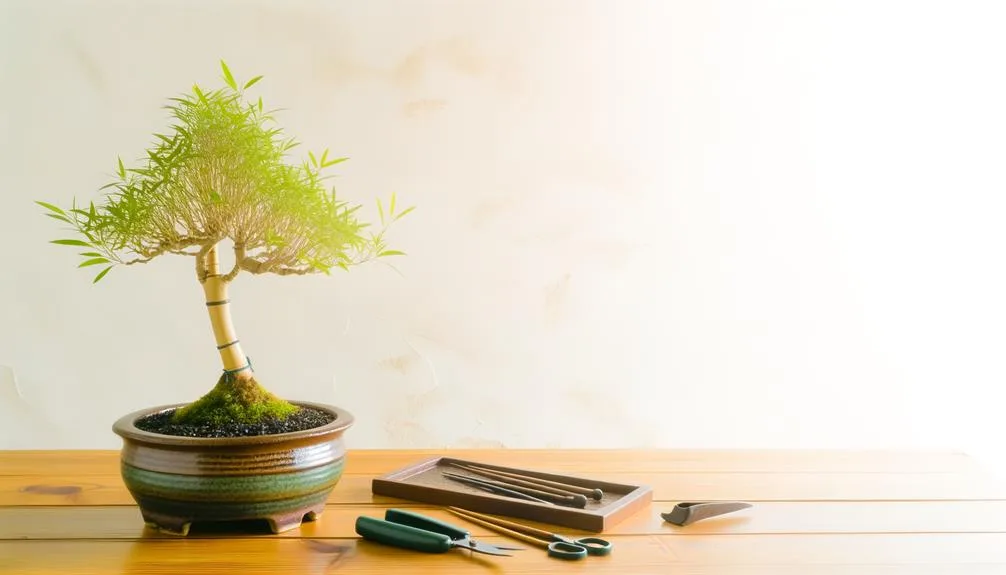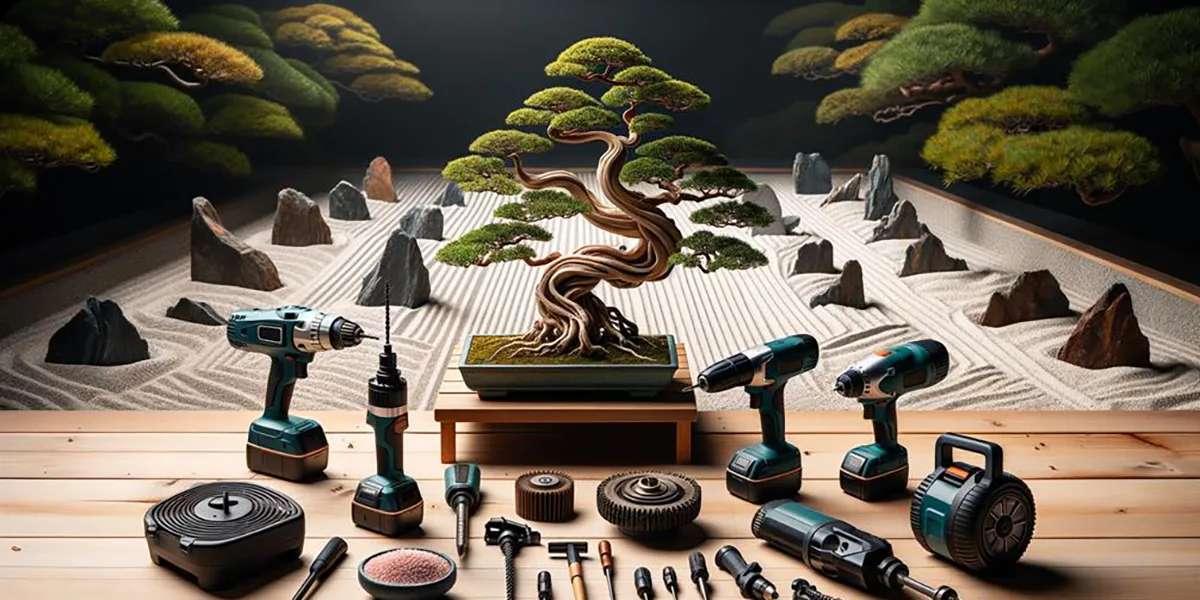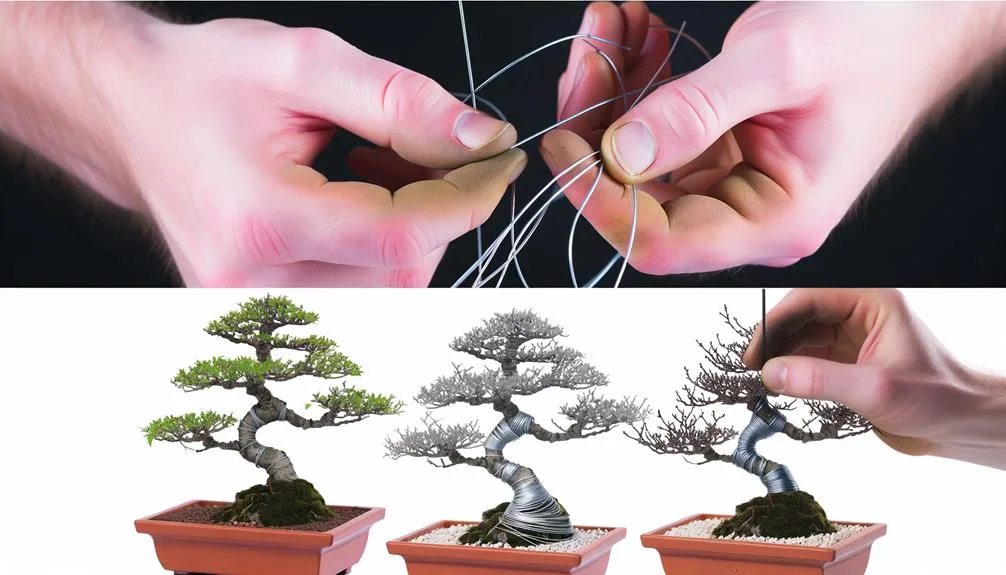Bonsai drainage, a critical and often overlooked element, is essential in my experience with cultivating bonsai trees. It’s a delicate and meticulous process where every aspect plays a crucial role in the tree’s overall health, with proper drainage being fundamental to its wellbeing.
Without this, bonsai trees can suffer from several health issues, including root rot and lack of necessary nutrients. However, with the right strategy in place, these potential problems can be easily avoided.
I’m going to reveal not only why proper drainage is so vital, but also provide practical guidance on how to achieve it effectively.
Key Takeaways
- Proper bonsai drainage is crucial for the health and longevity of the tree.
- Evaluation of the potting container is important to ensure adequate drainage.
- Choosing the right soil mix promotes proper drainage and root health.
- Effective drainage layering techniques ensure optimal soil conditions.
Understanding Bonsai Drainage Basics
Bonsai drainage basics are fundamental to ensure the health and longevity of your bonsai tree. Understanding these principles starts with evaluating your potting container and soil quality, which are critical for proper drainage.
The pot should have enough drainage holes to allow water to escape efficiently. If the pot lacks adequate drainage, the bonsai’s root system may become waterlogged. This can lead to poor growth or even root rot, which can be fatal to bonsai trees.
Next, consider the bonsai soil. Different types of bonsai trees require different soil compositions for ideal growth and drainage. The soil should retain enough water to nourish the tree while allowing excess to drain away.
Monitoring the soil’s moisture level is also essential. Avoid the mistake of adhering to a strict watering schedule, as this can lead to over-watering or under-watering. Instead, learn to understand the watering needs of your specific bonsai tree by closely observing the tree and soil conditions.
Choosing the Right Soil Mix
Choosing the Right Soil Mix is crucial for your bonsai tree’s health and vitality, especially after understanding the importance of bonsai drainage. The composition of the soil is a key determiner of how well your bonsai will drain and thrive. If the soil is compacted, it can lead to poor drainage, adversely affecting your bonsai’s health.
The right soil mix combines organic and inorganic materials in a manner that promotes drainage, retains moisture, and allows for adequate oxygen flow to the roots. The size and shape of your pot will also influence the soil mix selection.
The table below provides a snapshot of the consideration areas when choosing your soil mix:
| Consideration | Reason | Impact |
|---|---|---|
| Soil composition | Determines drainage and moisture retention | Health and vitality |
| Size of the pot | Influences soil quantity and mix | Plant growth |
| Shape of the pot | Affects soil distribution | Root development |
| Inorganic materials | Enhance drainage and aeration | Root health |
| Organic materials | Retain moisture and nutrients | Leaf and stem growth |
Effective Drainage Layering Techniques
Drainage Layering Techniques play a pivotal role in the quest for optimal bonsai health. Employing these effective methods is crucial, with a good Bonsai pot serving as the foundation for these techniques.
The first layering step is the addition of gravel or coarse sand at the bottom of the pot. This layer allows water to drain without washing away essential nutrients from the soil. This stage is crucial to prevent root rot, ensuring the volume of water does not overwhelm the bonsai’s delicate root system.
A mesh screen is placed over this first layer, preventing soil from clogging the drainage layer, thus allowing water to flow freely.
Application of sphagnum moss forms the next layer, further aiding in water regulation. This layer not only holds the right amount of water without oversaturation but also prevents soil particles from seeping into the drainage layer.
The final layer is composed of well-draining bonsai soil, forming the perfect environment for healthy root growth. The holes allow Excess water to drain, ensuring the right balance of moisture in the soil.
Implementation of these effective drainage layering techniques guarantees optimal soil conditions, leading to the flourishing health of your bonsai.
Preventing Waterlogging and Soil Compaction
Preventing waterlogging and soil compaction is crucial for maintaining the health and longevity of your bonsai. The small container and root ball of the bonsai make it susceptible to excessive water in the soil, which can suffocate the roots and damage the root system. It’s essential to water your tree thoroughly, allowing the water to drain out from the bottom of the pot to avoid waterlogging.
To prevent soil compaction, which can suffocate the roots, use a well-draining bonsai soil that won’t become compacted easily. Avoid submerging the Bonsai as it can compact the soil and damage the root. Water when the soil feels dry, but not completely dry, to maintain the right moisture level.
Here are some preventive measures and their importance:
| Preventive Measures | Importance |
|---|---|
| Proper Drainage Holes | Prevents water from accumulating at the bottom of the pot. |
| Well-Draining Soil | Reduces water retention and prevents soil compaction. |
| Regular Moisture Check | Allows adjustment of watering frequency to prevent waterlogging. |
| Thorough Watering | Ensures water reaches the entire root system and drains out to prevent waterlogging. |
Addressing Drainage Issues and Solutions
Addressing drainage issues is fundamental in bonsai care, and several solutions can be employed to ensure the optimal health of your tree. Essential Bonsai care requires a fine balance; the tree’s roots must retain enough water to survive, yet too much water can suffocate air pockets, restricting oxygen flow and leading to root rot.
Key steps to addressing drainage issues and solutions include:
- Observation of the Tree:
- Monitor the size of the tree and its water needs.
- Check for signs of overwatering such as yellow leaves or a soggy base.
- Root Pruning:
- Ensure roots are not blocking the pot’s drainage holes.
- Root pruning allows water to drain efficiently, promoting oxygen flow.
- Choice of Pot and Soil:
- Use a pot with sufficient drainage holes.
- The soil should be well-draining to prevent waterlogging.
Frequently Asked Questions
How Often Should I Bottom Water My Bonsai?
Bottom watering frequency for bonsai varies by species, age, and season. Over or under watering risks root health. Indoor bonsai care requires humidity trays to supplement. Drainage systems and proper watering benefit the bonsai’s overall health.
How Wet Should Bonsai Soil Be?
Bonsai soil should maintain balanced moisture levels, neither too wet nor too dry, to prevent overwatering consequences and drought stress. Soil aeration, seasonal adjustments, watering techniques, and pot material all significantly impact ideal soil conditions.
How Do I Know if My Bonsai Needs Water?
Identify bonsai dehydration signs such as wilting leaves. Monitor watering frequency, observe seasonal changes, and ensure optimal humidity levels. Examine bonsai leaf indications and root health to avoid over watering effects and drought stress symptoms.
Should Bonsai Soil Be Compacted?
Bonsai soil should not be compacted. Optimal density ensures adequate aeration, vital for root health. Improper compaction effects include hindered nutrient absorption and water retention, affecting soil porosity. Regular repotting and compaction alternatives can help.
